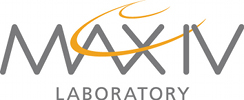The Future of Microfocus Protein Crystallography
Recent developments within protein crystallography methods in combination with the opportunities offered by the new upcoming synchrotron sources such as the MAX IV 3 GeV storage ring, make new exciting ways of carrying out research within structural biology possible. Small microfocus beamlines with a very high flux and increased coherence will make new types of experimentation possible.
The scientific possibilities will be highlighted through a series of talks by experts showing the impact of the new type of X-ray sources and microfocus beamlines on research within structural biology.
The new generation of microfocus beamlines will also set a high demand on instrumentation and suitable software. For example, data collection will potentially be very fast (in milliseconds) and radiation damage will allow only a limited amount of data to be collected from each sample. New technical solutions for sample handling and presentation, data processing methods and more will be needed for these types of experiments, and these will also be presented and discussed at the workshop.
The workshop is part of a process to obtain an updated proposal for the possible Phase 2b beamline MicroMAX. This workshop should give the user community an opportunity to explore the scientific possibilities of a new generation of microfocus beam lines, but it will also give them the chance to contribute with specific input on their own experimental demands on the beamline. The workshop is open for all.
Gunter Schneider, Karolinska Institute
Gregers Rom Andersen, University of Aarhus
Recent developments within protein crystallography methods in combination with the opportunities offered by the new upcoming synchrotron sources such as the MAX IV 3 GeV storage ring, make new exciting ways of carrying out research within structural biology possible. Small microfocus beamlines with a very high flux and increased coherence will make new types of experimentation possible.
The scientific possibilities will be highlighted through a series of talks by experts showing the impact of the new type of X-ray sources and microfocus beamlines on research within structural biology.
The new generation of microfocus beamlines will also set a high demand on instrumentation and suitable software. For example, data collection will potentially be very fast (in milliseconds) and radiation damage will allow only a limited amount of data to be collected from each sample. New technical solutions for sample handling and presentation, data processing methods and more will be needed for these types of experiments, and these will also be presented and discussed at the workshop.
The workshop is part of a process to obtain an updated proposal for the possible Phase 2b beamline MicroMAX. This workshop should give the user community an opportunity to explore the scientific possibilities of a new generation of microfocus beam lines, but it will also give them the chance to contribute with specific input on their own experimental demands on the beamline. The workshop is open for all.
Registration, Workshop Fees, Accommodation and Travel
The workshop is part of the MAX IV Laboratory user meeting. Register through the user meeting website. Latest day for registration is 13th September.Programme
Session 1 Tuesday September 24th 13:00 to 18:15 - Room: TERA
Scientific Possibilities of Microfocus and Serial Microcrystallography|
13:00 – 13:10 |
Welcome Jesper Andersen/Christoph Quitmann (MAX IV Laboratory) |
|
13:10 – 13:15 |
Scope of the workshop Richard Neutze (Gothenburg University) |
|
13:15 – 14:00 |
Smaller, Faster, Better Microcrystallography - the New Normal Janet Smith (Michigan University/APS) |
|
14:05 – 14:35 |
Serial femtosecond crystallography vs. synchrotron microfocus crystallography of GPCRs in lipidic cubic phase Daniel Wacker (Scripps Research Institute, USA) |
|
14:40 – 15:10 |
1 crystal, 5 datasets, 0.97 Å: phasing by S-SAD and segmented RIP at ESRF ID29 Luca Jovine (Karolinska Institutet, Sweden) |
| 15:10 – 15:30 | Coffee break |
|
15:30 – 16:00 |
The human histamine H1 receptor: small crystals with high impact Simone Weyand (Cambridge University, UK) |
|
16:05 – 16:35 |
Listeria Monocytogenes Lmo0818 – Exploring a putative Ca2+-ATPase, to understand calcium ion specificity Jens Preben Morth (Centre for Molecular Medicine, Norway) |
|
16:40 – 17:10 |
Microfocus and Serial Microcrystallography: An industrial crystallography perspective Tove Sjögren (AstraZeneca, Mölndal, Sweden) |
|
17:15 – 17:45 |
Microcrystallography at MAX IV - what can we do? Richard Neutze (Gothenburg University, Sweden) |
| 17:45 – 18:15 | General Discussion |
| 19:00 – 22:00 | Conference dinner |
Session 2 Wednesday September 25th 08:30 to 12:30 - Room: TERA
Technical Solutions for Microfocus and Serial Microcrystallography|
08:30 – 09:15 |
Pleasure in small things: Taking stock of Microfocus Experience David Stuart (Oxford University / Diamond Light Source, UK) |
|
09:20 – 09:50 |
Future plans for micro-crystallography at beamline P11 at PETRA III Alke Meents (DESY, Hamburg, Germany) |
|
09:55 – 10:25 |
Acoustic specimen preparation and delivery for next generation x-ray sources Alexei Soares (NSLS-II Brookhaven, USA) |
| 10:25 – 10:45 | Coffee Break |
|
10:45 – 11:15 |
Data quality from serial crystallography Thomas White (DESY, Hamburg, Germany) |
|
11:20 – 11:50 |
Micro-focus beamline instrumentation and operation Clemens Schulze-Briese (Dectris, Switzerland) |
| 11:55 – 12:30 | Plans for MicroMAX and General Discussion |
| 12:30 | Lunch |
Organized by:
Richard Neutze, Gothenburg UniversityGunter Schneider, Karolinska Institute
Gregers Rom Andersen, University of Aarhus


